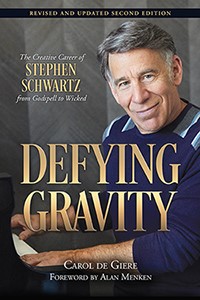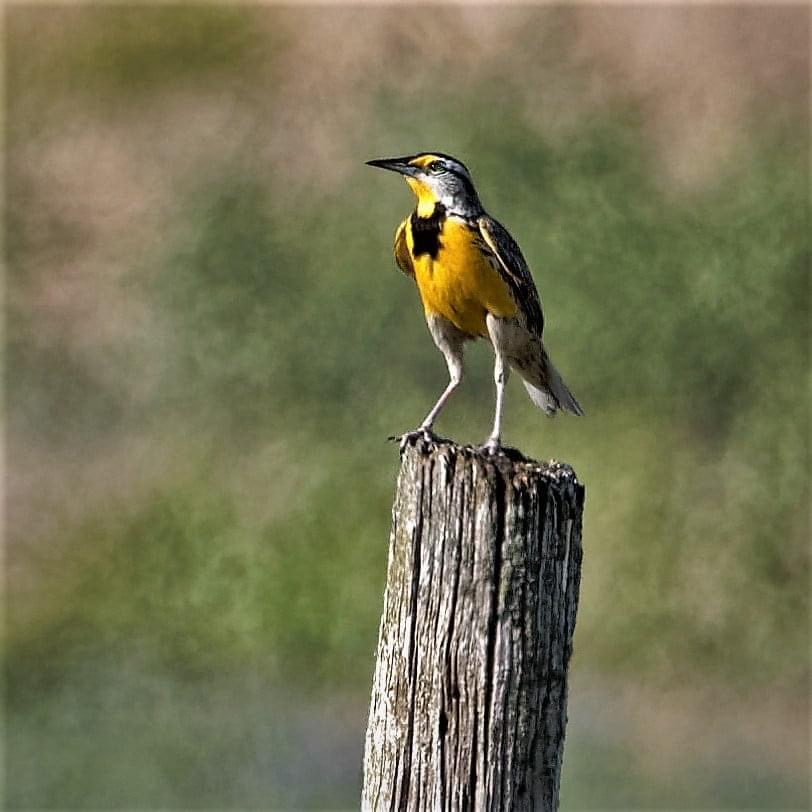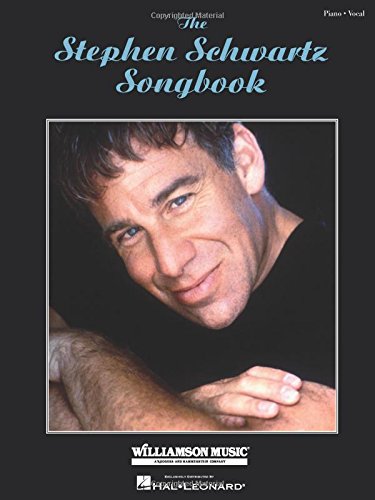From “Beautiful City” to “For Good” – On Writing Lyrics with Metaphors.

PHOTO: Composer-lyricist Stephen Schwartz and biographer Carol de Giere discuss metaphor over lunch June 11, 2021.
Poetic Lyrics
When poetic lyrics paint vivid pictures for us, they move us emotionally and help us remember the songs. Broadway musical writers like Stephen Schwartz have often used figurative language to enhance the audience experience. Oscar Hammerstein II (who was influential on Stephen) frequently used imagery and metaphor. For example, he wrote “It Might as Well Be Spring” for the musical State Fair, linking the delight of new love to springtime. Hammerstein also wrote the poetic “You’ll Never Walk Alone” for a tragic moment in Carousel when Julie Jordon needs the courage to walk through the storm of her life.
Focusing on Stephen Schwartz as a Lyricist
Stephen Schwartz has carried on the tradition of using metaphor and added his own spark. From whole-song metaphors like “Meadowlark” and “Beautiful City” to the nature-inspired similes of “For Good,” Schwartz is a master of imagery-filled lyrics that represent an emotional journey.
A metaphor is a literary device that figuratively compares and equates two things that are not alike. Standard metaphors (and similes, a subcategory of metaphor) make the comparison obvious, whereas implied metaphors compare two unlike things without actually mentioning one of them. Aristotle wrote, “The greatest thing by far is to be a master of metaphor… and it is also a sign of genius, since a good metaphor implies an intuitive perception of the similarity in the dissimilar.”

In an interview over lunch, I asked Stephen to reflect on creating metaphors in lyrics. The following are highlights from our conversation, edited for clarity. (For more stories about his creative process, please see my Stephen Schwartz biography Defying Gravity, now in an updated second edition. https://caroldegiere.com/defying-gravity)
I had arranged for us to meet for an outdoor meal at an upscale Italian restaurant tucked away at the back of a parking lot and shopping area in Ridgefield, Connecticut. On June 11th, we settled into our cushioned chairs at a table covered in white linen. Over salad and vegetarian pizza, we reviewed my computer printout of some of his famed lyrics for musicals and his Oscar-winning song “Colors of the Wind.”
Stephen’s first thoughts were about Paul Simon and other pop songwriters of the 1960s and 1970s who had inspired him as a developing writer. He said of Simon’s lyrics, “You don’t necessarily know exactly what he is saying from a literal point of view, but from an emotional or subtextual point of view you get it.” (Think “Bridge Over Troubled Water” or “I am a Rock,” for example.) He added, “I think that’s also true of Laura Nyro.”
Stephen then reflected on two of his own lyrics with this emotional quality: “Corner of the Sky” from Pippin and “Colors of the Wind” from Disney’s Pocahontas, and how unexpected connections in these implied metaphors contribute to their power. “There’s no such thing as a corner of the sky and the wind has no color—but it’s precisely because of that that I think the listeners appreciate what the character is feeling and what he or she is trying to say. Everyone knows what ‘Gotta find my corner of the sky’ means even though there’s no such thing as a corner of the sky, and everyone understands the meaning of painting with all the colors of the wind, even though the phrase doesn’t make literal sense.”
The lyric lines in these songs connect abstract qualities with visual images. In “Corner of the Sky,” the character Pippin equates his abstract youthful ideal of his place in the world with a sky image. In “Colors of the Wind,” Pocahontas, using the image of winds of varying colors, portrays a broader view of the natural world than John Smith’s Eurocentric view allows.
Making Metaphors for “Beautiful City” and “Children of the Wind”
We next turned to his experiences writing new lyrics for “Beautiful City,” a Godspell movie song that he rewrote in 1991 after the Rodney King riots in Los Angeles. As I had learned in previous interviews, the new version of the song is a good example of him using observation, in this case gained from media coverage, to find material for an extended metaphor. I commented to get his confirmation, “You took specific words that happened to be related to rebuilding after the riot and wrote a building metaphor.”
Stephen said, “There were literally ruins and rubble, and there was literally smoke. It was all over the news, what was going on in South Central LA. So I began with that—almost a literal image of the corner of Florence and Normandie, these images of urban destruction. And out of that, the city could be rebuilt both literally but also psychically—emotionally. I think you can call the title phrase ‘We can build a Beautiful City’ a metaphor because everyone who hears the song knows that it’s not literally about building, even though there are lyrics about bricks.”
Quoting the lyric, I added, “Brick by brick, heart by heart.”
We then looked at “Children of the Wind,” an anthemic song from the Broadway musical Rags set in America in the 1910s with music by Charles Strouse and lyrics by Stephen. In the piece, the lead character Rebecca sings of herself and her fellow immigrants in the lines “We’re children of the wind/Blown across the earth/Pieces of the heart/Scattered worlds apart….”
Stephen said, “I think it’s great in talking about the value of metaphor that you specifically chose ‘Children of the Wind.’ The final version used in the show was my third lyric try for that melody, and the previous two that did not work were much more literal. One version was called ‘I Will Find the Way’ and it contained straightforward lines like ‘I will find a way to you.’ What she was singing about was literally the story, but it wasn’t effective because it was just the story. It was only when I abandoned that approach and said to Charles, I need to be more poetic and, in fact, more metaphorical, that the song worked. That was such a lesson to me because once the lyrics were right, then all that anyone talked about was how great the music was. And that’s what you want as a lyricist. Even when I’m only providing the lyrics, my goal is that the lyrics will help the music to realize its emotional potential and then that’s what people will notice.”
Extending the Imagery – “Spark of Creation”
Another example I brought was “Spark of Creation”—a piece from Children of Eden sung by the character Eve about her discovery of creativity. I pointed to all the fire images and noted, “The whole thing is a metaphor because we don’t literally have fire in our blood.”
Stephen replied, “When I started writing the song and trying to put myself into that feeling that Eve has of excitement and anticipation, I just felt like my fingertips were tingling. And that’s why the first line was ‘I’ve got an itching in the tips of my fingers.’ It could have been ‘tingling’ now that I think of it, but that was the word that came to me first, plus ‘itching’ is easier to sing. So that was a literal feeling and the rest of it flowed from there, but that was my way in.”
I asked, “Is there something you can say about continuing to look for the metaphors? Because you’ve got (on different lines) ‘boiling,’ ‘burning’, ‘spark,’ ‘blazing,’ and ‘fire.’”
Stephen said, “The metaphor is of fire as an expression of inspiration and creativity. That’s not a new idea obviously—’the creative fire.’ But then in writing about it, I just wanted to keep that image going. Later she says, ‘The spark of creation/may it burn forever…/I am a keeper of the flame.’ The fire image goes through the song because the title demands it. We’ve talked about this before: starting with a title and letting the title determine a lot of what the rest of the song should be.”
Whole Song Metaphor – “Meadowlark”

PHOTO: A meadowlark, photo by Frank Dziedziak (used with permission).
In our discussion of metaphor, of course I brought up “Meadowlark,” his story song from The Baker’s Wife that is known best from the many concert performances or cover versions on albums like those of Patti LuPone, Liz Callaway, and Betty Buckley. In this unusual song, the character even realizes she is exploring a metaphor, in the sense that she is telling a story that she’ll use to reevaluate her own predicament.
Stephen said, “For ‘Meadowlark,’ the entire song is a metaphor, basically, until finally at the end, the last verse describes literally what is going on.”
He didn’t elaborate further during our lunch interview but has previously described the writing of this song. He explained in a website Q and A that the metaphor for “Meadowlark” represents “a story about someone who does what she knows is the ‘right’ thing to do, but then it breaks her heart, and she literally cannot live with the choice… As I was thinking about her expressing the emotions she was going through and feeling them myself as I began to write, this story more-or-less popped into my head.” He remembers it being influenced by several familiar children’s stories, including Hans Christian Andersen’s “The Emperor’s Nightingale.” (For more detail on how he arrived at the song, see the Schwartz biography, Defying Gravity.)
Similes Too – “For Good”
After looking back at my song list, we conversed about his famous ballad for Elphaba and Glinda, “For Good,” from Wicked, which is filled with similes—the specific type of metaphor that uses “like” or “as.”
Stephen said, “What I had going into ‘For Good’ was this great title that came from a conversation with Winnie [Holzman], and then the conversation I had with my daughter about her relationship with a lifelong friend, which very specifically defined an attitude toward this kind of relationship. And then the rest of it was similes.
“When I work with translators for ‘For Good,’ I often see them struggling to translate ‘Like a comet pulled from orbit’ into Danish or some other language, that is a literal translation of the specific similes I used. I tell them: ‘All you have to do is pick images of something that has an effect on something else. I don’t care what the images are, you have to illustrate the central idea—because I knew you, I’ve been changed—that’s what you’re aiming for. So you have to find images of things that cause a change in other things, but you don’t have to use the same images I did.”
A Window on a Character’s World – “Through Heaven’s Eyes”

We talked next about “Through Heaven’s Eyes,” one of my favorite songs from The Prince of Egypt, used in both the movie version and later stage version, in which the Midian priest character Jethro encourages Moses to take a broader view of his life and worth. We discussed Stephen’s trip to Egypt and how he had seen mountains in the Sinai desert that looked like big piles of rocks before he wrote the lyrics: “And the stone that sits on the very top/Of the mountain’s mighty face/Does it think it’s more important/Than the stones that form the base?”
Stephen noted, “Again the whole song is a metaphor. Basically, what Jethro is saying over and over is: You don’t have the bigger picture of where your life fits in the grand scheme of things, so you can’t dismiss yourself as being worthless—you have no idea. That’s the story of the song. From there, how do you say it? You can say it in one sentence as I just did, but then you have no song!”
We both chuckled.
He continued, “So how do you express that in a way that feels musical and vivid? One uses metaphor. So what I did was consider the character who sings this—what does Jethro see every day? He wouldn’t use a metaphor about a busy city street.”
“Taxis,” I suggested.
Stephen continued with a gesture toward a make-believe line of taxis, “He wouldn’t say ‘One taxicab doesn’t know where the fleet is going.’ Or ‘Does a car in a train think about where the whole train is going?’ Those images don’t belong to him. So you limit your imagery to what comes naturally to the character. We talked about stones on mountains. That’s what you see in that kind of desert landscape—stones on top of stones. And he talks about a tapestry because that’s what they have, and a lost sheep, and so on.”
Meanwhile, back in Connecticut
Stephen Schwartz has a treasure trove of experiences to draw from in conversation, but he also has meetings to attend (mostly on Zoom these days), songs to write, and family responsibilities, and so for now, we wrapped up. Before finishing our lunch, he and I also savored a limoncello gelato, frozen dairy drizzled with a lemon liquor syrup that was an odd combination but very satisfying. It reminded me of the way metaphorical language can pleasingly connect disparate experiences.
FIND OUT MORE

Note: The sheet music with lyrics for many of these songs can be found in the Stephen Schwartz Songbook.
A longer version of this metaphor interview that is specifically oriented to musical writers can be found on MusicalWriters.com: Experiences of a Metaphor-Maker
Enjoy another lunch interview with Stephen Schwartz posted on Musicalwriters.com: Wicked Meets Cinderella and Other Rodgers and Hammerstein Musicals – An Interview with Stephen Schwartz
The Schwartz Scene Newsletter covers Stephen Schwartz’s latest projects. Here are links to the recent issues: Theschwartzscene.com/quarterly-newsletter/archive/
